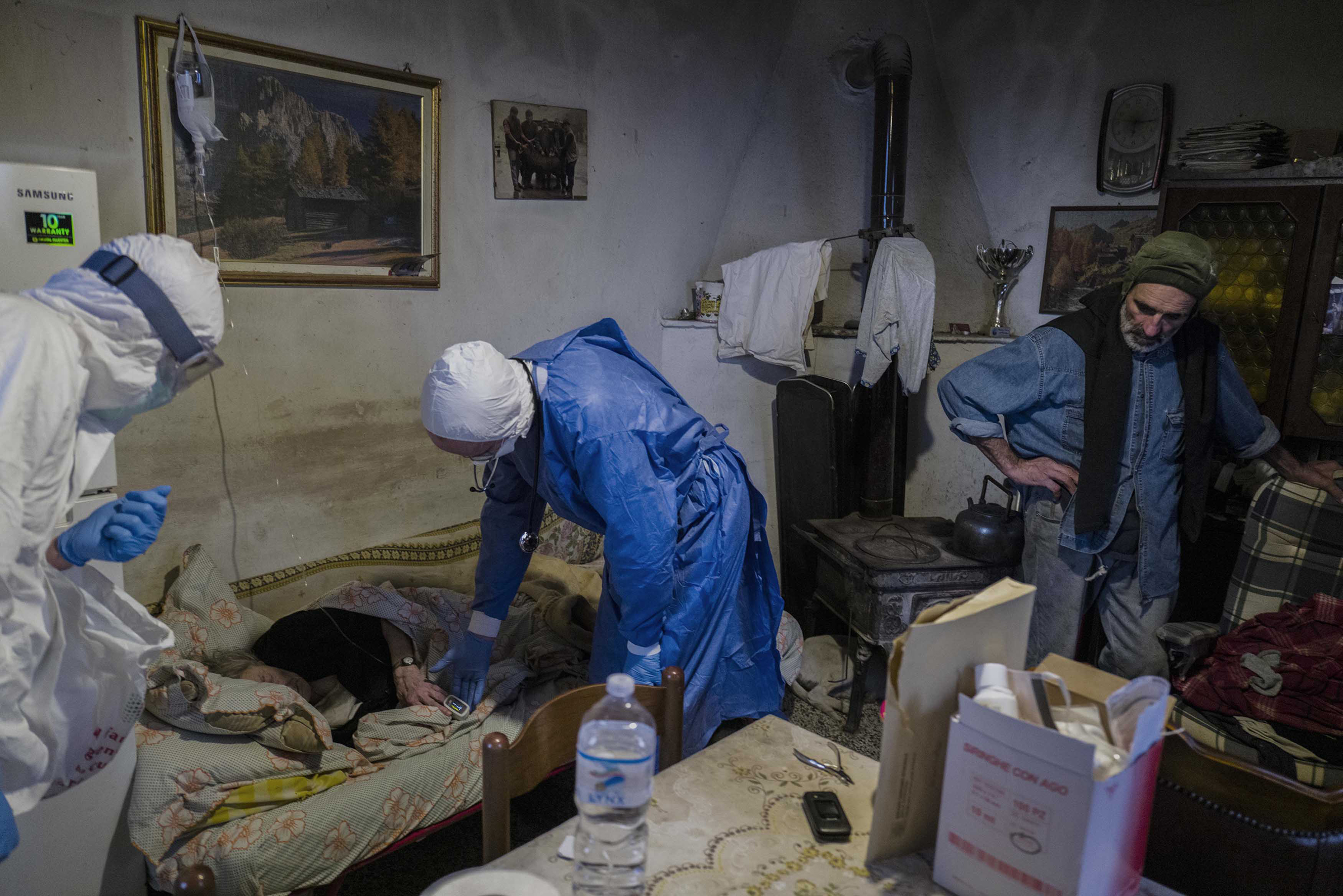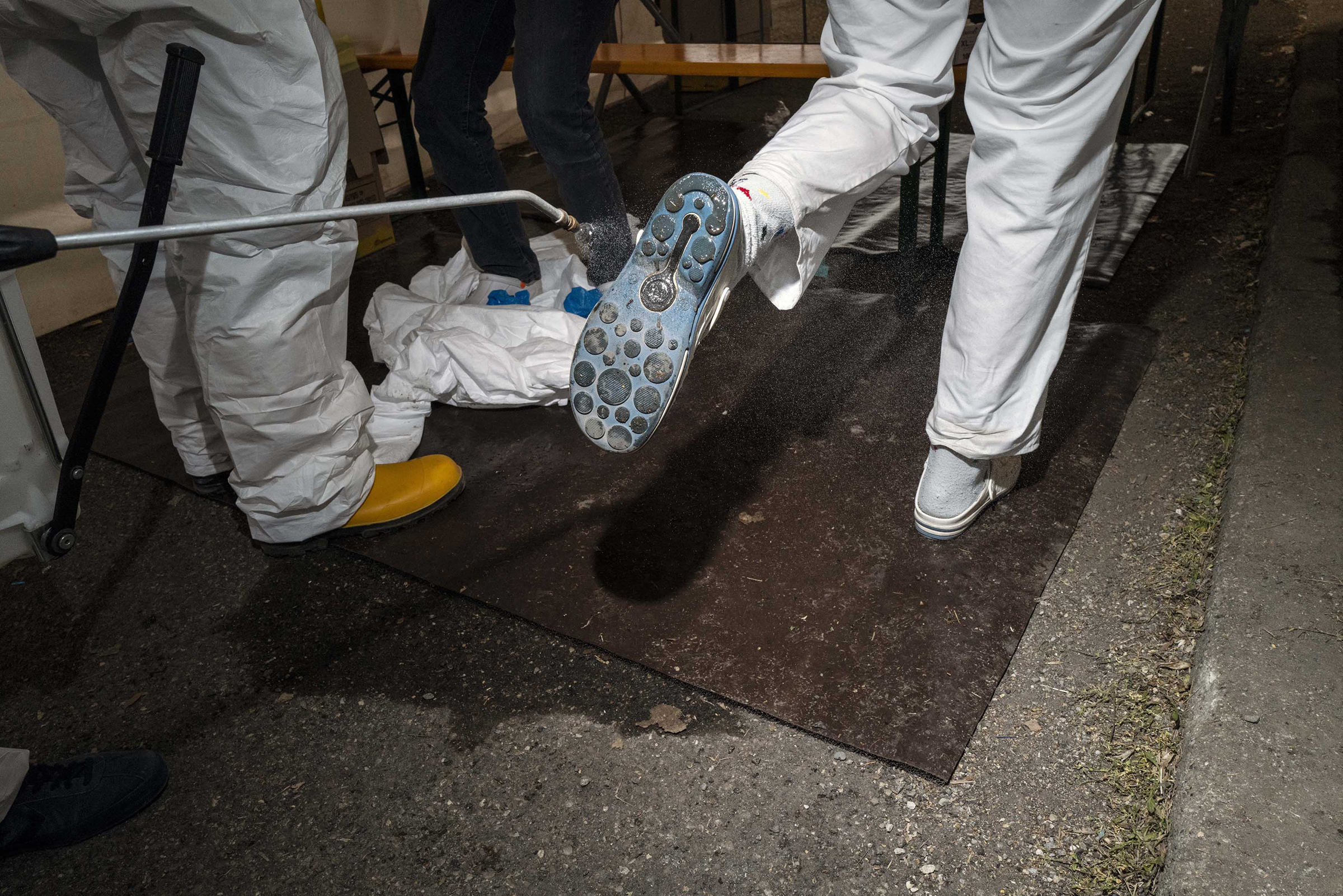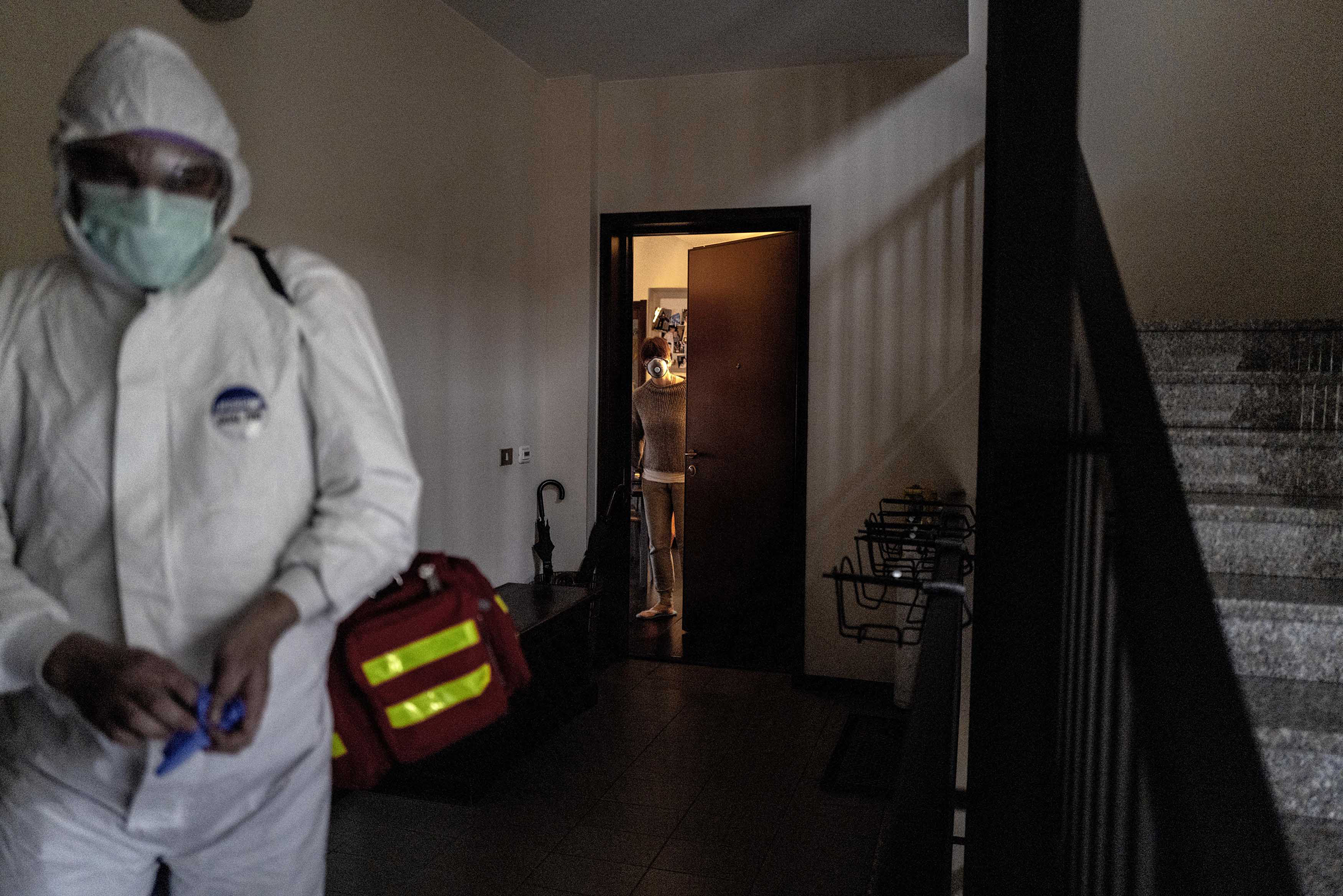Over the last month Giovanni Sartori has lost his sense of time.
He doesn’t remember exactly when his younger brother, a strong and healthy 53-year-old with whom he lived, began to have a high fever and breathing problems. But he knows that after about a week in that condition, taking the paracetamol prescribed by his general practitioner, he was taken to the hospital. Ten days later, he was dead.
Sartori, 60, remained alone with his 90-year-old mother in Castana di Pradello, a village in Emilia Romagna, Italy where there are more cows and sheep than people. Their home is over 3 miles from the closest pharmacy and grocery store, and 30 miles from the hospital in Codogno, where the first outbreak of COVID-19 in Italy was registered. Now, Sartori’s mother is presenting symptoms of the virus. “She’s been like this for a couple of weeks and she didn’t want to go to the hospital,” he explains in a telephone interview. “Luckily, Dr. Cavanna came to our place one day. When I saw him walk in, I felt reborn.”
Luigi Cavanna is the head of the oncology ward in the nearby Piacenza hospital. From the second week of March, when the lockdown in Italy began, he realized that too many seriously ill COVID-19 patients were arriving in the emergency room — while most of them could have been treated at home earlier, before their symptoms became too grave.

That’s why he now travels throughout the areas around Piacenza every day, along with several colleagues. Together, his three teams have visited more than 300 people with COVID-19 symptoms. They bring patients medicine and a device that monitors the levels of oxygen in the blood, which they return after they’ve recovered. In more critical cases Cavanna leaves tanks of oxygen and, as with Sartori’s mother, bags of fluid with nutrients for non-oral feeding. “My mother is already better,” says Sartori. “Being in her own bed rather than in a crowded hospital is what made the difference.”
“When I realized that the emergency room was overcrowded with people already in serious condition, I knew something was wrong,” Cavanna explains. “This is not a stroke or a heart attack, but a virus that can hit in different ways and that follows its course. We have to try to stop it before it damages the lungs in a way that is sometimes irreversible.” According to the data he collected during the first month, fewer than 10% of the patients he treated at home worsened to the point where they had to be hospitalized.
Until last week, Cavanna was giving most of his patients both hydroxychloroquine (commonly used for malaria and certain inflammatory disorders like rheumatoid arthritis) and an antiviral that is usually prescribed for HIV. Then AIFA, Italy’s equivalent to the U.S.’s Food and Drug Administration, issued a note advising to be very careful in prescribing them together. So now, except in rare cases, he uses hydroxychloroquine on its own. Although the drug hasn’t been tested for the coronavirus, he says it is the “most effective treatment for now.”

The White House has also been enthusiastically recommending the drug as treatment for coronavirus, with President Donald Trump describing it as a “miracle cure” — an endorsement that is risking shortages. Cavanna stresses the importance of having a doctor prescribe and monitor the medication vigilantly. “Every day I receive dozens of phone calls and answer all of them. I prefer answering the phone at 2 a.m. rather than hearing that a patient is getting worse,” Cavanna says.
Now that Italy’s rate of coronavirus cases has plateaued, medical officials are looking at what worked and what didn’t — and increasingly they are turning to new initiatives such as the one pioneered by Cavanna. Local administrations in other regions and nonprofits like Doctors Without Borders are organizing groups of doctors to provide services at home and in facilities most at risk, such as nursing homes.
“We made a mistake, especially in Lombardy” explains Ivan Cavicchi, professor of sociology of health at the University of Tor Vergata in Rome. “We were totally focused on increasing the number of beds in intensive care units, , without having enough anesthesiologists,” he says. “But in situations like this, strengthening the entire system is essential. Only then can hospitals function properly.”
He says that instead general practitioners and other primary care providers were “abandoned” and “left without protection.” So far nearly 100 doctors have died in Italy, about half of them general practitioners.

Cavanna and his team are able to enter the patients’ homes because they have the necessary protective gear, provided both by the hospital where they work and by private donors. During their expeditions they wear a protective suit that Cavanna jokingly describes as similar to ones worn by “aviators in the movies,” and on top of it, at each visit, they wear an additional disposable gown. They also wear googles, two masks, two gloves, two caps and shoe covers.
Officials are also trying to prepare facilities for a possible resurgence of the coronavirus. “In addition to reorganizing the hospitals, we need to reorganize the doctors’ studios throughout the region”, explains Pier Luigi Bartoletti, deputy secretary of FIMMG, the Italian federation of family doctors. Bartoletti and his collaborators are already thinking about next winter, when—in the worst case scenario—the virus could strike again with force.
“As early as October, the waiting rooms of doctors’ offices must be redesigned, with separate routes for those with flu symptoms,” he says. “In addition, we need to offer doctors protective gear and training to use it properly, along with the appropriate diagnostic tools.” Bartoletti is working with doctors at the Spallanzani Hospital in Rome to test a device that would allow for rapid COVID-19 testing using just a drop of blood taken from the finger.

Today, coronavirus tests may require 4 or even 5 days to get a result. That’s too long, if you are following the preventative strategy. Instead of waiting for the tests, Cavanna takes along a device the size of a mobile phone to perform ultrasound chest scans. “We know that in such an affected area people with signs of bronchitis or pneumonia are almost certainly positive,” he explains. “I keep the swab in case of doubt or for post treatment, to make sure they’re no longer contagious once cured.”
Doctors and experts agree that the pandemic has been an eye opener — not only for Italians but also for the rest of the world — with regard to the strengths and weaknesses of the various healthcare systems. But no system has yet proven equipped to deal with an extreme situation such as the current pandemic. “We were taken by surprise at a time when we felt immortal, but now it is clear to everyone that this is not the case”, says Pier Luigi Bartoletti. “If we repeat the same mistakes, it will be our fault too.”
- Donald Trump Is TIME's 2024 Person of the Year
- TIME’s Top 10 Photos of 2024
- Why Gen Z Is Drinking Less
- The Best Movies About Cooking
- Why Is Anxiety Worse at Night?
- A Head-to-Toe Guide to Treating Dry Skin
- Why Street Cats Are Taking Over Urban Neighborhoods
- Column: Jimmy Carter’s Global Legacy Was Moral Clarity